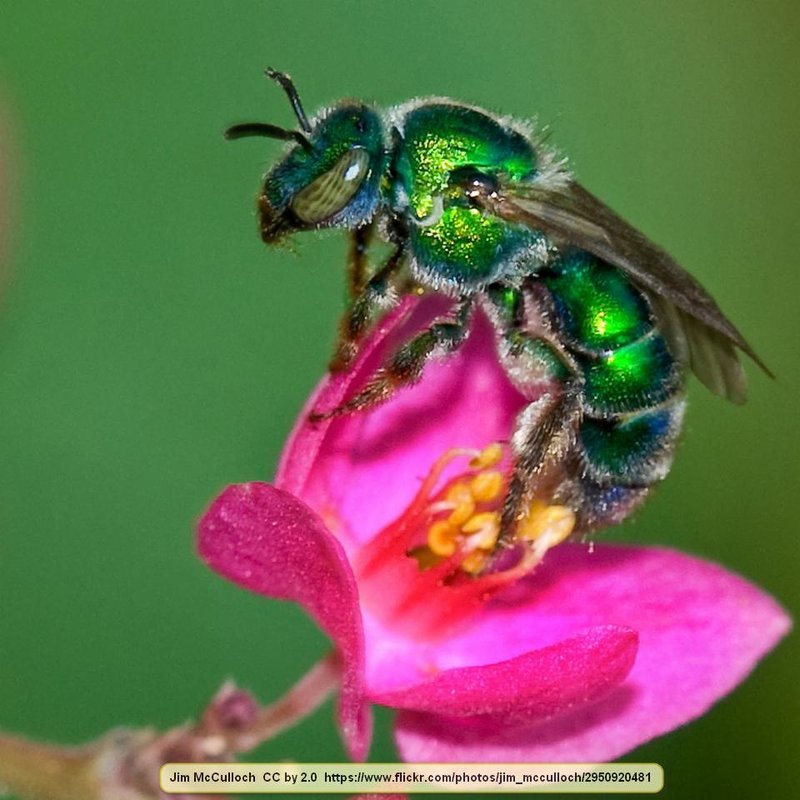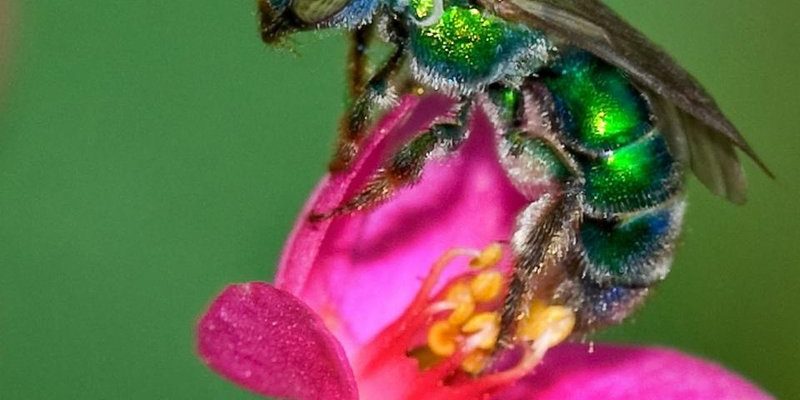
Imagine you’re sitting outdoors on a warm day, enjoying the sun. You might start to feel a little sweaty, and suddenly, a little bee arrives, drawn to your moisture. That’s a sweat bee! Despite their name, these bees are not out to bother you but are actually quite harmless. Let’s unravel some of the myths and learn what makes sweat bees unique and important.
Sweat Bees Are Dangerous
One of the most prevalent myths is that sweat bees are aggressive and will sting you at the slightest provocation. Honestly, that’s not quite true. Sweat bees, which belong to the family Halictidae, are generally non-aggressive. They’re more interested in gathering nectar and pollen than bothering humans.
When they do sting, it’s usually a last resort. Most sweat bees are actually quite small, often no larger than a fingernail. They’re not out to chase you or ruin your picnic. If you leave them alone, they’ll likely do the same for you.
Understanding Their Behavior
You might be wondering why sweat bees seem to hover around you when you sweat. It’s all about attraction. Sweat bees are drawn to the salt and moisture in your perspiration. They’re not being aggressive; they’re simply curious about the resources your body provides.
So, if a sweat bee shows up while you’re enjoying the outdoors, think of it not as a threat but as a tiny reminder of nature’s interconnectedness. Like a friend who’s just come over to borrow some sugar, they’re not there to ruin your day.
Sweat Bees Only Live in Warm Climates
Another myth is that sweat bees only thrive in warm regions. While it’s true they prefer warmer temperatures, many species can adapt and live in a variety of climates, including cooler areas. The key is that they’re often more active during the warmer months when flowers are abundant.
Some species of sweat bees even survive in temperate zones and can be found in urban areas. Picture a bustling city park filled with flowers; these bees are likely working hard, pollinating the plants that beautify our surroundings. They’re little champions of biodiversity, helping to keep our ecosystems healthy.
Myth or Fact: They’re All the Same
You might also hear people say that all sweat bees are identical. Not true! There are over 1,000 species of sweat bees, and they vary widely in color, size, and behavior. Some are metallic green or blue, while others might be more muted in color.
These variations mean that different species may have different nesting habits, dietary preferences, and even social structures. Some are solitary, while others live in small groups. Understanding these differences helps appreciate how diverse and important these little creatures truly are.
Sweat Bees Don’t Help the Environment
Some people believe that sweat bees don’t contribute to pollination like honeybees do. Here’s the thing: this couldn’t be further from the truth! Sweat bees are effective pollinators, playing a critical role in the ecosystem. They help fertilize plants by transferring pollen, which is essential for plant reproduction.
Sweat bees are particularly good at pollinating flowers that have tubular shapes, which can be harder for larger bees to access. By doing this, they help produce fruits, vegetables, and other plants that many animals (including us!) rely on for food. It’s like they’re tiny gardeners, cultivating the earth around us.
How They Contribute
Think of sweat bees as part of a complex network of pollinators. Without them, many plants wouldn’t thrive, and that could lead to significant shifts in our food supply and the health of our ecosystems. Their contribution is invaluable, yet often overlooked.
So, the next time you see a sweat bee, remember that it’s doing important work. Its small size doesn’t diminish its impact!
All Sweat Bees Make Honey
A common assumption is that all bees produce honey, and therefore, sweat bees must too. Actually, sweat bees don’t produce honey in the way honeybees do. While honeybees are social insects that store honey in hives, sweat bees are mostly solitary, and many don’t produce any honey at all.
Instead of honey, sweat bees may store pollen and nectar in their nests for their larvae. This means they provide for the next generation, but their contribution to honey production isn’t significant in the way honeybee hives are.
Understanding Honey Production
This doesn’t mean sweat bees are less important. They still help pollinate flowers and crops, but the way they “store food” for their young is simply different. Imagine them as the self-sufficient artists of the bee world; they may not be producing honey for markets, but they are quietly ensuring their species continue.
Sweat Bees Are Pests
Lastly, many people think that sweat bees are just pesky bugs that invade our outdoor activities. While it’s true that they might hover around you while you sweat, they’re not pests in the traditional sense. They won’t invade your home or cause structural damage like other pests might.
Instead, think of them as guests in the ecosystem. They play an important role in helping flowers pollinate, which benefits many other species, including us. Their presence is actually a sign of a healthy environment.
Creating Harmony
So, in essence, instead of swatting them away or viewing them with disdain, try to coexist peacefully. Sweat bees, like all insects, have a place in the grand scheme of life. If we learn to appreciate them, we can foster a better relationship with our surroundings.
Sweat bees might be small and often misunderstood, but they play a large role in our ecosystems. From their non-aggressive nature to their importance in pollination, the truths about these little creatures can help reshape how we view them.
Next time you see a sweat bee buzzing around, remember that it’s not out to get you but rather to work diligently within its environment. By understanding and appreciating these tiny helpers, we can better protect them and the ecosystems they support. So, let’s give a little cheer for the sweat bee—it might just be the unsung hero of the insect world!

